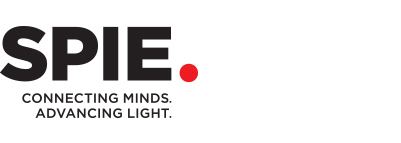Area served Worldwide Founded 1 July 1955 | Number of employees 180 | |
 | ||
Type Professional Organization Origins Formerly: the Society of Photo-Optical Instrumentation Engineers, later, the Society of Photo-Optical Instrumentation Engineers Method Conferences, Publications, Trade Shows CEO Eugene G. Arthurs (1 Nov 1999–) Motto Connecting Minds. Advancing Light Similar Institute of Electrical and Elect, Crossref, ASME, Association for Computin, IMEC Profiles | ||
SPIE is an American not-for-profit professional society for optics and photonics technology, founded in 1955. It organizes technical conferences, trade exhibitions, and continuing education programs for researchers and developers in the light-based fields of physics, including: optics, photonics, and imaging engineering. SPIE is most known for Photonics West, held in San Francisco.
Contents
- Former names
- Mission
- Conferences and exhibitions
- Publications
- Scientific journals
- SPIE Press
- Digital Library
- SPIE Professional
- SPIE Newsroom
- SPIE Open Access
- SPIE Career Center
- Courses
- Membership
- Awards
- References
The society publishes peer-reviewed scientific journals, conference proceedings, monographs, tutorial texts, field guides, and reference volumes in print and online. In 2015, the society provided more than $5.2 million in support of optics education and outreach programs around the world.
Former names
On July 1, 1955 SPIE was founded as the Society of Photographic Instrumentation Engineers in California to specialize in the application of photographic instrumentation. In 1964 the society changed its name to the Society of Photo-Optical Instrumentation Engineers. In 1977 SPIE moved its headquarters to Bellingham, Washington, and in 1981, to reflect a changing membership, the Society began doing business as (DBA) SPIE—The International Society for Optical Engineering. In 2007, the society ended its DBA, and is referred to simply as "SPIE".
Mission
The mission of SPIE is to serve scientists and engineers in industry, academia, and government working in a wide variety of fields that utilize some aspect of optics and photonics, the science and application of light.
Individuals involved with the society conduct research and apply new techniques to the design and development of technologies such as semiconductor manufacturing, robotics, medical imaging, next-generation displays, battlefield technologies, entertainment, biometric security, image processing, communications, astronomy, and much more. SPIE has members from around the world, including North and South America, Europe, Africa, and Asia, with central offices in North America and Europe.
Conferences and exhibitions
SPIE Conferences and Exhibitions connect optical science and the optics industry. The society is affiliated with over 140 meetings and events each year.
Publications
The society's first publication, SPIE Newsletter, was launched in 1957. In 1959, the society published its first book, SPIE Photographic Instrumentation Catalog. The newsletter morphed into the society’s first journal, now known as Optical Engineering, SPIE’s flagship monthly journal. Throughout the years, SPIE has created many publications including journals, magazines, newspapers, websites, and books.
SPIE publishes:
Scientific journals
All SPIE journals are peer-reviewed.
SPIE Press
SPIE Press, the only independent, not-for-profit book publisher specializing in optics and photonics technologies, produces print monographs, handbooks, tutorial texts, and field guides, as well as electronic books and apps for mobile devices. Its origins date back to 1989 with the publication of The New Physical Optics Notebook.
Digital Library
The SPIE Digital Library publishes online technical papers from SPIE Journals and Conference Proceedings from 1962 to the present, as well as eBooks published by SPIE Press. There are more than 450,000 articles with more than 18,000 new research papers added annually.
SPIE Professional
SPIE Professional is a quarterly magazine that covers optics industry insights, technology overviews, career trends, and provides informational articles for optics and photonics professionals.
SPIE Newsroom
The SPIE Newsroom includes industry news and technical articles organized by topic:
The type of content includes: technical articles related to optics and photonics news, SPIE.TV, SPIE Announcements, member news, and product updates. RSS Feeds are available on different topics.
SPIE Open Access
SPIE started a new Open Access program January 2013 to promote knowledge transfer, education, and awareness of technology and industry developments in optics and photonics. All new articles published in SPIE journals for which authors pay voluntary page charges are freely accessible to anyone.
SPIE Career Center
The SPIE Career Center is a recruitment resource for companies and professionals in the optics and photonics community. Candidates can post their CV/resume online, search the job board, and access additional resources for career advancement. Employers and recruiters can post their jobs online and conduct targeted resume searches.
Courses
SPIE provides more than 1,100 educational courses and workshops in various formats including at SPIE conferences, online, via DVDs and videos, and in-company training courses. SPIE has been approved as an accredited provider of Continuing Education Units (CEUs) by IACET, The International Association for Continuing Education and Training.
Membership
The society's membership includes more than 18,500 professionals, students, and organizations. Membership provides conference, course, and publication rate reductions, a complimentary online journal, a quarterly subscription to SPIE Professional, 10 SPIE Digital Library downloads, voting rights, the opportunity for students to form Student Chapters for additional benefits, and much more.
Those "distinguished through outstanding contributions in the relevant technologies" are eligible for election as SPIE Fellows. Since the society began in 1955, more than 1,200 members have been elected as Fellows. In 2017, SPIE promoted 71 members as new Fellows.
Awards
The society issues several awards:
